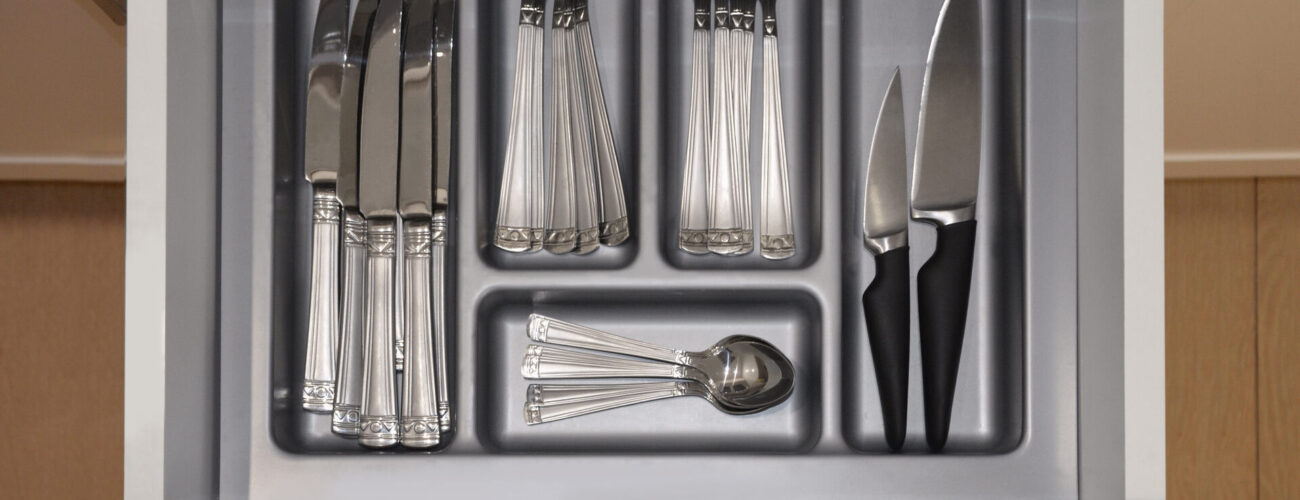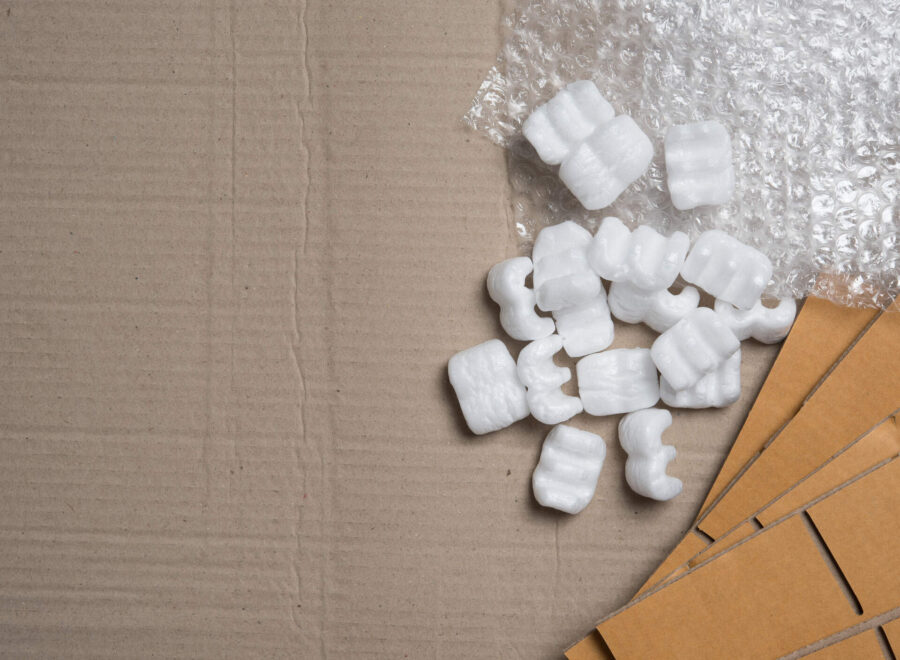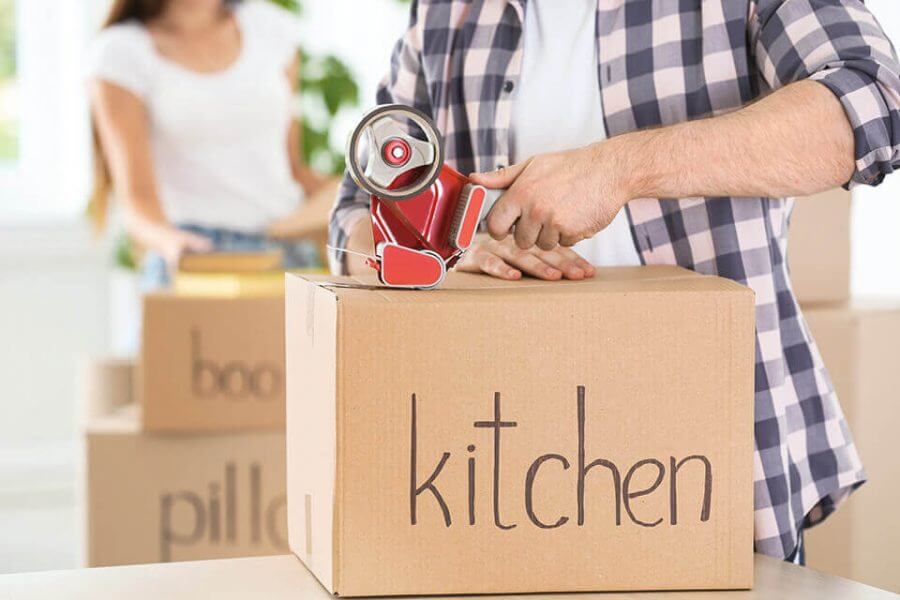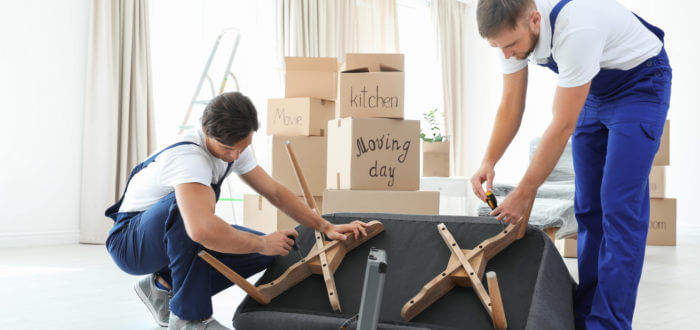

The Complete Guide: How to Pack Silverware for a Move
Posted in How-to,Moving Tips & Tricks on June 23, 2023
Moving across the country can be very demanding, with numerous details to consider and belongings to organize. Among the many items that require careful packing, tableware stands out as both valuable and delicate. In this comprehensive guide, we will take you through the step-by-step process of how to pack silverware for a move, providing you with expert tips and techniques to safeguard your cherished utensils.
To ensure the safe and organized packing of silverware for a long-distance relocation, it is recommended to individually wrap each piece, categorize and sort the utensils, use appropriate packing materials, and secure the boxes properly. For delicate items like sterling utensils, extra care should be taken. Hiring professional movers can be beneficial. By following these guidelines, you can protect your belongings and make the relocation process smoother and more efficient.
Sort and Organize Silverware
Sorting and organizing your cutlery is an essential step before packing it for long-distance moving. By categorizing them and decluttering unnecessary items, you can streamline the packing process and ensure a smooth transition to your new home. Begin by familiarizing yourself with the different types of utensils and their characteristics.
Forks, knives, spoons, and various specialized utensils all serve unique purposes and require specific handling. Consider separating them into distinct groups to facilitate packing and unpacking later on.
Categorize the Silverware
Silverware encompasses a wide range of utensils, each with its own distinctive features and functions. Common types include dinner forks, salad forks, teaspoons, tablespoons, butter knives, steak knives, and various serving utensils. Take the time to examine your collection and categorize each piece accordingly.
This will help you maintain organization throughout the packing process and make it easier to locate specific utensils once you settle into your new home. Once you have identified the different types, sort them into separate groups. Place all the forks together, knives together, spoons together, and so on.
This approach minimizes the chances of items getting lost or damaged during the relocation. Consider using individual compartments or dividers to keep each category separate and well-protected. This way, you can easily access and unpack them when the time comes.
Declutter and Purge Unnecessary Items
Moving presents an excellent opportunity to declutter and get rid of unnecessary items, including tableware. Take the time to assess your collection and determine what you truly need and want to bring with you to your new home. Consider factors such as functionality, sentimental value, and condition. If you have duplicates, damaged pieces, or utensils you no longer use, it may be best to donate, sell, or dispose of them.
To make the decision-making process easier, ask yourself a few key questions:
- Does each piece serve a purpose in your daily life or special occasions?
- Are there any damaged or tarnished items that are beyond repair?
- Have you recently upgraded your cutlery and no longer require the older set?
By reflecting on these questions, you can make informed choices about what to keep and what to let go of. Consider donating usable items to charity, organizing a garage sale to sell pieces in good condition, or recycling damaged utensils to reduce waste. You can also sell something online on websites like Craigslist.
By decluttering, you can pack more efficiently and reduce the number of boxes or containers required. As you downsize your utensils, consider how they will fit into your new kitchen setup and ensure that the items you keep align with your needs and preferences. Embracing a minimalist approach will make unpacking and organizing in your new home much more straightforward. Watch this video if you need more tips on decluttering.
Choose the Right Packing Materials
Selecting the appropriate packing materials is crucial for ensuring the safety and security of your belongings during a move. By using the right supplies, you can protect your utensils from scratches, dents, and other potential damage and relocation mistakes. Begin by gathering the essential supplies, which include sturdy moving boxes of appropriate size.
Opt for boxes that are strong enough to support the weight of the utensils and provide ample space for organizing and cushioning materials. To safeguard your silverware further, consider using protective materials such as bubble wrap, packing paper, or foam. Wrap each piece individually to prevent them from shifting and colliding during transportation.
Invest More in the Supplies for Protecting Valuable Tableware
You can also look for packaging designed specifically for delicate items, such as foam pouches or dividers. These materials offer an extra layer of protection against potential impacts. Alternatively, consider using felt or fabric pouches. These soft and cushioned pouches provide a gentle environment for storing and transporting valuable tableware, reducing the risk of scratches or damage.
If you possess heirlooms or particularly valuable items, you might want to consider using storage rolls or chests. These specialized containers are designed to accommodate and protect silverware, offering compartments or individual slots for each piece. These storage solutions provide added security and organization, particularly for cherished items with sentimental or monetary value.

How to Pack Silverware – Embrace Different Packing Techniques
When it comes to tableware, employing various packing techniques is key to ensuring its safe and organized transport. By following step-by-step instructions on how to pack silverware for shipping, you can protect each individual piece. Start by wrapping each piece individually in packing paper or bubble wrap, securing it with tape to prevent unwrapping during transit.
Pay special attention to knife blades and delicate handles, which may require additional protection. For knife blades, consider using blade protectors or cardboard sleeves to shield them from accidental cuts or damage. Delicate handles can be wrapped with extra layers of bubble wrap or secured with rubber bands to prevent any potential shifting or breakage.
When it comes to placing the items in boxes, layering and organization are essential. Begin by lining the bottom of the box with a soft cushioning material such as foam peanuts or crumpled paper. Place a layer of wrapped utensils on top, making sure to distribute the weight evenly.
Consider alternating the direction of each piece to minimize movement and prevent potential damage. Repeat this layering process, adding more cushioning material between each layer until the box is full. Fill any remaining gaps with additional protective material to prevent shifting during transit.
To keep cutlery sets together and organized, use efficient packing methods. Bundle together matching sets using rubber bands or small zip-top bags, ensuring that each set remains intact during the move. If you have utensils with removable or detachable parts, such as serving utensils, secure them together using twist ties or tape. Clearly label each box containing silverware, indicating its contents and any special handling instructions, to make unpacking and organizing easier.

Label and Secure the Boxes
After everything is packed, it’s important to label and secure the boxes properly to facilitate a smooth and organized move. Start by labeling each box clearly with a description of its contents. Use a permanent marker or labels to indicate “kitchen utensils” along with any special instructions such as “fragile” or “handle with care.”
This way, both you and your long-distance movers will know the contents of each box and handle them accordingly. Additionally, consider numbering the boxes and creating an inventory list that corresponds to each box, making it easier to track and ensure that all the boxes have arrived at your new home.
To secure the boxes, use duct tape to seal them tightly. Reinforce the bottom seams and any openings to prevent accidental spills or damage during transit. Add extra tape around the corners and edges of the boxes for added strength. If the boxes have any fragile or delicate items, mark them with clear labels indicating their fragility to alert the movers to handle them with extra care.
Carefully Consider What Goes Where Inside a Moving Truck
Lastly, when loading the boxes into the moving truck or storage container, make sure to stack them securely. Place heavier boxes at the bottom and lighter ones on top to prevent crushing or shifting during transportation.
Fill any empty spaces with additional protective material or use straps to secure the boxes in place. By labeling and securing the boxes properly, you can have peace of mind knowing that your precious tableware is well-protected and organized throughout the moving process.

Hiring Professional Cross Country Movers Will Be Worthwhile
When it comes to moving delicate and valuable items like silverware, hiring professional cross-country movers can be a worthwhile investment. These experienced professionals have the expertise, knowledge, and specialized equipment to handle delicate items with care. They understand the intricacies of transporting fragile belongings, ensuring your silverware arrives safely at your new home.
There Are Many Benefits of Hiring Movers for Delicate Items
Professional movers have the necessary training and experience to handle delicate items like silverware. They are equipped with the appropriate supplies, techniques, and tools to ensure the utmost protection during the move. Movers are well-versed in handling fragile items, including utensils with intricate designs or delicate handles. They know how to properly wrap, secure, and pack each piece, minimizing the risk of damage during transportation.
Besides cross-country moving services, professional movers offer insurance coverage that can provide additional peace of mind. In the unlikely event of any damage or loss, their insurance policies can offer compensation for your valuable items. This added layer of protection is particularly important when dealing with delicate and irreplaceable items.
Hiring professional movers also saves a lot of time and effort. They take care of the entire moving process and offer packing services, loading, and unloading. This allows you to focus on other important aspects of your move and relieves you of the physical and logistical challenges associated with cross-country relocations.

When You Learn How to Pack Silverware for Moving, the Whole Process Will Go Faster
Mastering the art of how to pack stainless silverware for moving is an invaluable skill that can significantly expedite the entire moving process. By learning the proper techniques, you can ensure the safe arrival of your items at your new home.
However, if you don’t feel like doing it by yourself, hiring a reliable cross-country moving company is always a good idea. So, contact us and allow Cross Country Movers to provide you with a seamless and stress-free move. With your silverware well-protected and organized, you can focus on other aspects of your relocation, knowing that the entire process will be faster and more efficient.
FAQ (Frequently Asked Questions)
Can I Pack Silverware With Other Kitchen Items?
Yes, you can pack them with other kitchen items, but it’s important to take precautions to protect your utensils from damage. Consider using dividers or individual compartments within the boxes to keep the silverware separate and prevent scratching or tangling. It’s also advisable to wrap each piece individually with protective paper, bubble wrap, or cloth to provide an extra layer of protection.
Be mindful of the weight distribution within the boxes to avoid any damage during transportation. If you have silver-plated utensils, it’s best to keep them separate from stainless steel items to prevent potential chemical reactions that may cause tarnishing or damage. By taking these precautions and organizing the items properly, you can safely pack your cutlery with other kitchen items, optimizing space and ensuring safe relocation.
What Should I Do if I Have Sterling Silverware?
If you have sterling silverware, it requires additional care and attention when wrapping. Before packing, thoroughly clean and polish each piece to remove any tarnish or debris. Once cleaned, wrap each sterling silver utensil individually with acid-free tissue paper or silver cloth to prevent scratching and tarnishing. Avoid using plastic wrap or rubber bands, as they can trap moisture and cause damage.
For added protection, place the wrapped utensils in airtight plastic bags or anti-tarnish pouches to inhibit tarnish formation. If possible, pack the sterling silverware in a separate box, clearly labeled as fragile and containing valuable items. Consider including silica gel packets to absorb moisture and prevent tarnishing.
Is It Necessary to Individually Wrap Each Piece of Silverware?
While it may not be absolutely necessary to individually wrap each piece, it is highly recommended to do so to ensure maximum protection. Individual wrapping helps prevent scratches, dents, and tangling during transportation. By wrapping each piece, you create a barrier that minimizes contact and potential damage caused by friction or impact. It also allows you to organize and pack the cutlery more efficiently.
Use protective paper, bubble wrap, or cloth to wrap each piece separately. For delicate or valuable pieces, individual wrapping provides an extra layer of cushioning and security. Additionally, wrapping each piece individually makes unpacking and organizing easier at your new home. While it may require a bit more time and effort, individually wrapping each utensil is a worthwhile step to safeguard your tableware and ensure their safe arrival.
How Should I Pack Silverware for a Long-Distance Move?
It’s crucial to prioritize protection and organization. Start by sorting and categorizing the utensils, separating them into different types (forks, knives, spoons, etc.) for easier unpacking. Wrap each piece individually with protection paper, bubble wrap, or cloth to prevent scratching or damage. Use tape or rubber bands to secure the wrapping. Consider using dividers or compartments within the boxes to keep the cutlery separate and organized.
Layer the wrapped utensils in the boxes, placing heavier items at the bottom and lighter ones on top. Fill any gaps with protective material to minimize movement. Seal the boxes securely with tape, reinforcing the seams and corners. Label the boxes as “kitchen utensils” and indicate any special handling instructions or fragile contents. If possible, opt for climate-controlled transport or consider using anti-tarnish products to protect them during long-distance relocation.






